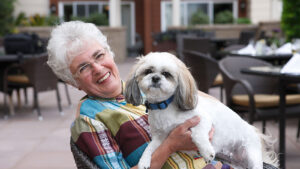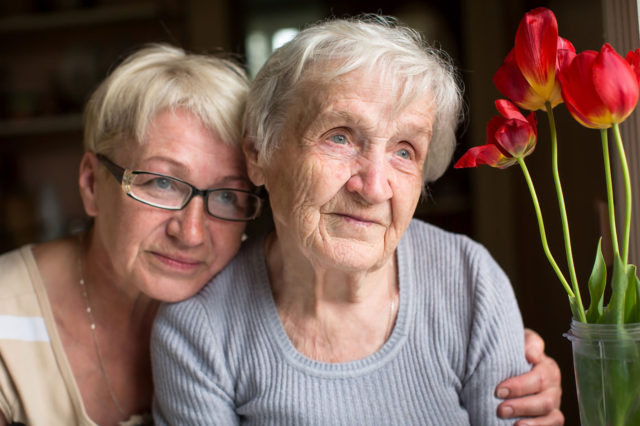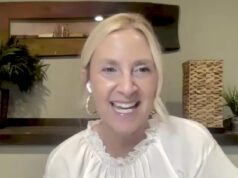And welcome, everyone, to Answers for Elders Radio Network. And we are here with an amazing guest, someone that the longtime listeners may remember. And if you go onto our platform and you’re looking for information on Parkinson’s disease, this is the person that you want to connect with. And we are very honored to have Lianna Marie back with us. Lianna is the author of The Complete Guide for People With Parkinson’s Disease and Their Loved Ones and Everything You Need to Know About Caregiving for Parkinson’s Disease, and she has a new upcoming book, The Parkinson’s Path. And Lianna Marie, welcome back to Answers for Elders.
– Thank you very much, Suzanne. Good to be here.
– I’m so glad you’re here because, more and more every day we’re hearing information about Parkinson’s disease. It’s not a misnomer, and of course we’re learning a lot about the disease, and I’ve connected you with Athira Pharma. They’re doing a lot of of testing, so there’s a lot of hope in the world of brain-related illnesses, and you are one of the people that can help families out here. But I would really like to talk a little about your background and how you got into this world. I know your mom had Parkinson’s, isn’t that correct?
– Yeah, thank you for that question. I know a lot of people, if they’ve read any of my books, they have a little bit of background. But just to fill people in who don’t, my mom had it for 30 years, which, for many people, that’s a long time. She got diagnosed when she was in her late 40s, and at that time, that was in the early 90s, that was a very young age for people with Parkinson’s. Nowadays, it’s it’s quite common, we see people in their 30s or even their 20s get diagnosed with Parkinson’s. But in the early 90s, and that was the same time that Michael J. Fox revealed he was also diagnosed, and he was in his late 20s at the same time, so it was kind of like my mom and Michael J. Fox, this parallel timeline where they were both living with Parkinson’s. So, anyway, so that was a long time ago, and for 30 years she she lived, you know, I’d say probably 20 of those years were a pretty, pretty good quality of life. It was near the end that, like many people who live with Parkinson’s for that long, she developed dementia, unfortunately, and lived with that for for about eight years. So I was her daughter, obviously, and as the disease progressed, I was kind of her cheerleader at first, helping to find information to help her live a better life. And then Dad evolved to a little bit more carepartnering, if you will. And then at the very end, I would say, the last eight years or so, caregiving, more hands on, and then advocating, which turned out to be a really important piece of the whole story in terms of getting my mom the best care that she could for where she was at. So it was a long time, like three decades. It’s a good portion of my life anyway. And I was only in my teens when she was diagnosed, and here I am — I’m now the age that she was when she was diagnosed. So so that’s that’s sort of the background to my, if you will, my Parkinson’s path. A lot of people say when they asked me, oh, you wrote a book on Parkinson’s, what did you know? Kind of like, how are you qualified to do that? And so I say, well, my mom lived it for 30 years. And as you know, if you know anyone with Parkinson’s, someone close to you, it’s not just the person with Parkinson’s that’s living with the disease. It’s the people that are closest to them. So I can honestly say, I would never say I could fully understand the pain that my mom went through at times, but I can tell you that we all live with it. I live with it, her second husband lived with it, my family, close family members, so yeah, it was a long time.
– You use the word advocate, and I think that is really where a family doesn’t necessarily know how to advocate in the best way, or if they do, they don’t necessarily know the right steps. And so I’m assuming that a lot of your inspiration probably came through a lot of trial and error, a lot of, “what do we do? How could we make things better in the future?‘ Tell us a little bit about that.
– Yeah, and actually that was the impetus to writing the book in the first place. Our original book was “Everything you Need to Know about Parkinson’s,” and that stemmed from a conversation I was having at the kitchen table with my mom. This is like ten years in to her living with Parkinson’s, and we had only just discovered that music, when she put on her – back then, it was an MP three player – she put on her little earphones and that would help her get out of freezing episodes, they call them in Parkinson’s, freezing game. So she gets stuck in one spot, we put this these earphones on and almost 100% of the time, maybe 99% of the time, she could get out of those. So that was just one example of the various things we learned through living with Parkinson’s, not out of a book, but we learned by living with Parkinson’s. And so, a friend of mine said, you guys learned a lot about this, have you ever thought about putting that together in a book? And at that time, we didn’t have anything, it was mostly just doctor books, as I call them, which is — those are great, but at that time, there was nothing practical and basically tips and tricks or lessons learned, if you will, from trial and error, oh this didn’t work or this worked, and that music piece was was one key example of something that really helped my mom many ways.
– It’s fascinating how the brain works. And I’m lucky. I’ve had the privilege of interviewing so many amazing experts on brain injuries, and brain function, and Alzheimer’s, and Parkinson’s, and all these different types of brain conditions. And to have a resource like you that really helps families to pinpoint this, because I think a lot of things that happen in this evolution of living with the loved one that is diagnosed with the disease, I’m sure for you, you’ve found kind of a niche that a lot of families are looking for but they don’t necessarily know there’s a resource out there. And I know you have an amazing website. But tell us a little bit about the differences between your books. You’ve got a new book coming out which is called The Parkins’s Path, but you’ve written two other books. Explain the differences between the three.
-Sure, yeah, and I think, like I said, initially when we wrote the first book, it’s sort of a — it’s been republished as The Complete Guide for Parkinson’s. It’s basically to cover all the different areas of Parkinson’s that one might encounter. Let’s say my loved one or I have just been recently diagnosed. We talk about pretty much everything that you can think about. Hence the name, “Everything you Need to Know“ was the original name. But, I clarify, a lot of people will say, oh, there’s not everything in this book, and I said, No, you know what? We are not creating an encyclopedia for you. The idea is that we’re trying to make things easier for you. So we will find the most important things that you need to know, because we don’t want to overwhelm you. We know that now, with the Internet, it’s absolutely insane how much information there is out there. So how can we take all that, and bring it into one concise book, so that will help people at the beginning of their journey. So that’s the first book.
The second book was for care partners, caregivers, people like myself, daughters, sons, but also in particular spouses who may be caring for someone with Parkinson’s, and mid-, mid- to late stages of Parkinson’s disease.
And this [third] one, this is the final one. I always say this is gonna be the last one, who knows? This third one is… Over the years, people say, and it’s true, that this illness is a snowflake illness, that Parkinson’s is unique to everyone, which is absolutely true. Just because I lived with it for 30 years, somebody might live with it for five years, they may have different symptoms. There’s so many different variations. But there’s one thing that I would argue is the same across the board, and that is the emotional journey that people go on when they’re living with a chronic illness like Parkinson’s. And that is what I hear over and over and over again from people who are living with it, people I talked to, who have read my books or have been part of our Facebook forums, et cetera. It’s it’s things like frustration. It’s things like the sadness and the loss. It’s it’s also things, it’s not all negative, but it’s emotions. People are wondering, am I normal for feeling this way? Someone with Parkinson’s, for example, or the care partner is asking me, what should I do about this? I feel like my life has just completely changed, and what do I do about this? So a lot of it is feel feel, feel, I feel this. I feel this, and I realized that in looking back over the journey with my mom, there really were some commonalities that we experienced across the board with many others that that are living with the disease. And so I’ve written a book that goes through the 30 years, I go through the 30 most common emotions that we went through, and how we worked through them, what we did about them, and give some practical ways that we navigated through each challenge. And it wasn’t just all bad stuff, some thing’s happened that, quite honestly I hate using the word joyful because people might think that’s odd to say in relationship to a chronic illness, but there were a lot of moments of joy that we experienced throughout Mom’s illness. And, really, what are our options? You get diagnosed with Parkinson’s, are you’re going to give up? No. One of my favorite quotes is from someone with Parkinson’s who said, and I think everyone has probably heard this before, but “Parkinson’s is not the end of your life, it’s the beginning of a new one.” So that’s what The Parkinson’s Path is all about.
– Fabulous and so coming up in our next segment, Lianna and I are going to talk about how it is what it’s like to be a daughter and a caregiver for someone who has Alzheimer’s, and we’ll be right back right after this.













